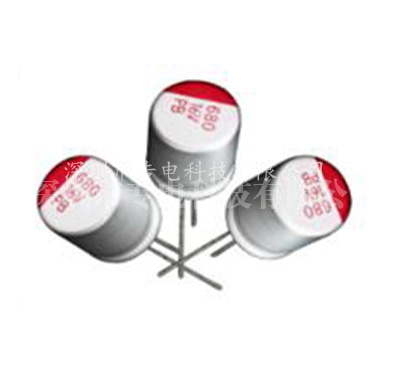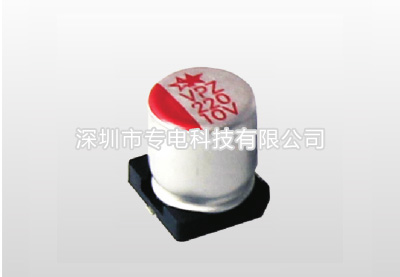How to analyze the advantages and disadvantages of solid capacitors ? The dielectric of liquid electrolytic capacitors is liquid electrolyte. The liquid particles are very active at high temperatures and exert pressure on the inside of the capacitor. Its boiling point is not very high, so it may explode. Solid capacitors use polymer dielectrics and solid particles. At high temperatures, both particle expansion and activity are lower than liquid electrolyte. Its boiling point is also as high as 350 degrees Celsius, so the possibility of explosion is almost impossible. Theoretically speaking, it is almost impossible for solid capacitors to explode.

Solid capacitors have better performance in equivalent series impedance than traditional electrolytic capacitors. According to tests, solid capacitors have extremely small equivalent series resistance when operating at high frequencies, and have excellent conductivity at high frequencies, with reduced electrical impedance and The characteristic of lower heat output is evident between 100KHz and 10MHz. Traditional electrolytic capacitors are more easily affected by the temperature and humidity of the operating environment, and have slightly poorer high and low temperature stability.
Even at minus 55 degrees Celsius to 105 degrees Celsius, the ESR (equivalent series resistance) impedance of solid capacitors can be as low as 0.004 to 0.005 ohms, but electrolytic capacitors will change due to temperature. In terms of capacitance value, liquid capacitors will be lower than their marked capacitance values below 20 degrees Celsius. The lower the temperature, the capacitance value will also decrease accordingly. At minus 20 degrees Celsius, the capacitance drops by about 13%. The capacity reached 37% at minus 55 degrees Celsius.
Of course, this has no impact on ordinary users, but for players who choose liquid nitrogen for ultimate overclocking, solid capacitors can ensure that the capacitance will not be affected by the temperature drop, which will greatly reduce the stability of overclocking. Because the capacitance value of solid capacitors will only decrease by less than 5% at minus 55 degrees. Solid capacitors do have many advantages, but they are not suitable all the time.
The low-frequency response of solid capacitors is not as good as that of electrolytic capacitors. If they are used in parts involving sound effects, they will not get good sound quality. In other words, it is not necessarily reasonable for a motherboard to use all-solid capacitors! Whether they are solid capacitors or electrolytic capacitors, their primary function is to filter out noise. Therefore, the capacity of the capacitor only needs to meet certain numerical requirements. As long as the component quality is passed, the stable operation of the motherboard can be ensured. And electrolytic capacitors can do this!
When the solid capacitor is at 105 degrees Celsius, its life span is the same as that of the electrolytic capacitor, which is 2000 hours. After the temperature drops, their life span will increase, but the life span of the solid capacitor increases to a greater extent. Under normal circumstances, the working temperature of the capacitor At 70 degrees or lower, the lifespan of solid capacitors at this time may reach 23 years, which is almost 6 times longer than electrolytic capacitors! But...will your motherboard still be used after 23 years? And this 23 years refers to 24 hours of power on. Even if the capacitor has such a long life, other components may not be able to survive 23 years!
Compared with electrolytic capacitors, the capacity of electrolytic capacitors is much greater than that of solid capacitors under the same volume and voltage. Currently, most computer motherboards and CPU power supplies use solid capacitors. Although the problem of explosion is avoided, due to volume limitations, capacity redundancy is very high. Less; moreover, due to capacity issues, the frequency of switching of the CPU power supply part has to be increased.
Both solid capacitors and electrolytic capacitors will have capacity attenuation problems during use. For circuit boards using solid capacitors, slight fluctuations in capacity will cause ripples in the power supply, causing the CPU to not work properly. Therefore, in theory, the life of solid capacitors is very high, but the life of boards using solid capacitors may not be long.






